Forgive me if I sound about 10 years old, but as a grown-ass man I still have my childhood obsession with weird and wonderful WWII vehicles in full effect. Be it their wild creativity, overblown mechanicals or straight-up ‘let’s cross our fingers and see if this works’ hopefulness, they still to this day inspire customisers, movie machines and factory designers the world over.
So to share my little obsession with you all, I’ve put together a list of my Top 5 insane WWII bikes in no particular order for your wide-eyed enjoyment. Behold what can happen when you have a war to win, government funding, and a military boss who just won’t take ‘that’s an insane idea’ for an answer.
5. The Killinger & Freund Motorcycle (1938)
Immediately breaking my own rules, this bike is not strictly a ‘battle motorcycle’. Instead, the one-of-a-kind ‘Killinger & Freund’ motorcycle was discovered by the occupying American forces after the end of the war in 1945.
Originally handmade in 1938, the art deco bike’s development was halted thanks to WWII rather than ramped up. None-the-less, the bike history has tied inextricably to the era and was spawned from the same ‘blue sky’ pre-war thinking that created many of the other bikes here.
Seemingly more of an exercise in engineering showmanship than a design meant to solve some urgent issue or challenge, the bike’s entire powerplant was fitted into its front wheel. Yes, you read that right.
And while this is handy in the fact that you can just swap wheels on the bike and off you go with a new engine, it also makes for a myriad of design challenges—including how to supply fuel to the spinning engines, power to the electrics, and throttle control to the carbs.
Despite all these brain teasers, the bike was reportedly fully operable and ended up being transported to the US, where it still lives today. And while it lacks the hardware and off-road chops of the other bikes here, it sure as hell isn’t running short of creativity. Just imagine if the idea had made it into post-war production?
4. The NSU Kettenkrad HK 101 (1944)
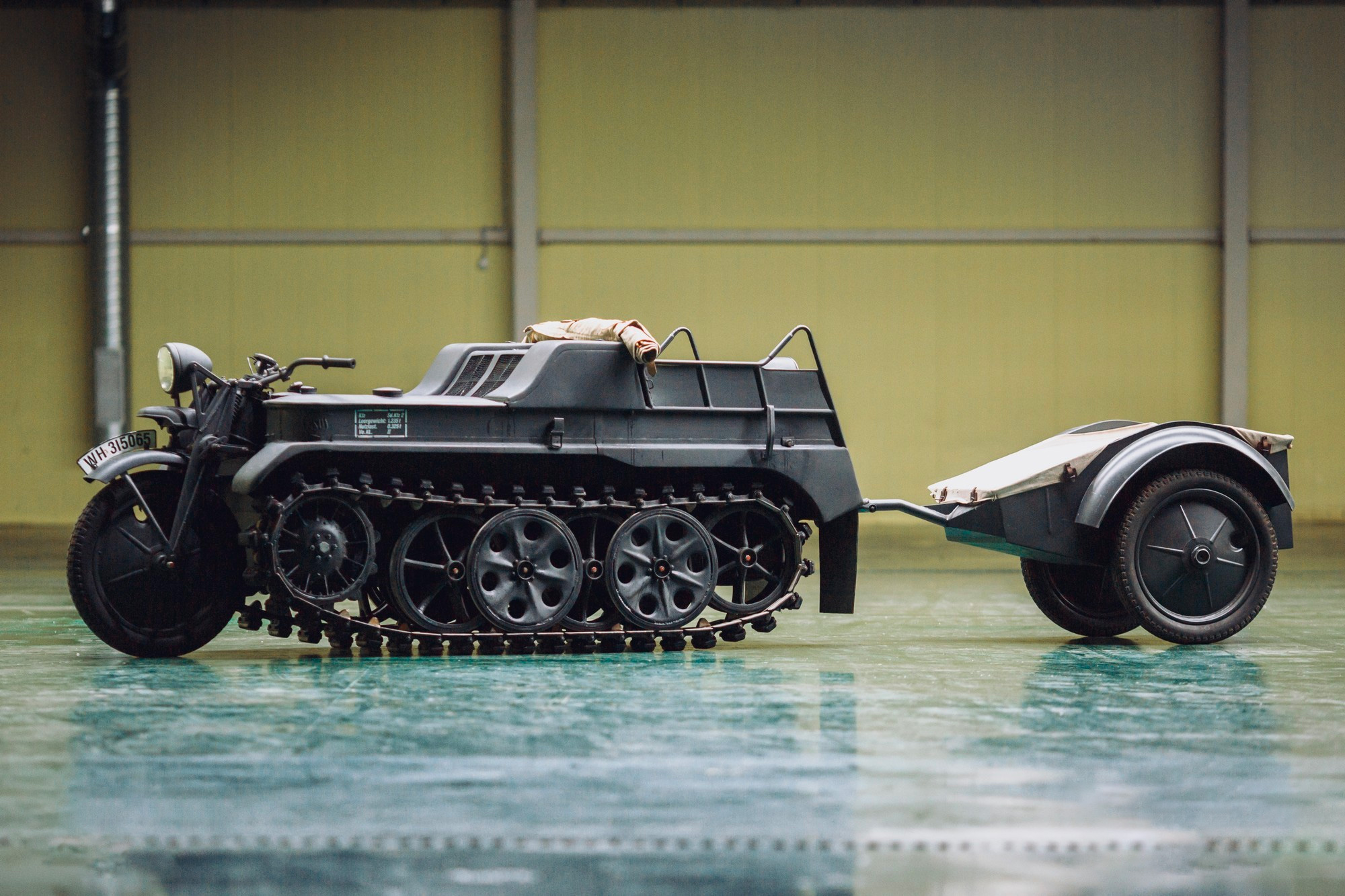
Like a concept vehicle from a Captain America movie, the NSU Kettenkrad or ‘Chain Wheel’ motorcycle (if you can still call it that) was developed late in the war by the Germans in an attempt to overcome the challenges of army motorcycles getting bogged in Europe’s wet, muddy springs and autumns.
Weighing a rather incredible 1,200 kgs (2600 lbs), the thing proved great in the mud but traded that advantage against a tendency to roll over on slopes and expose its passengers to gunfire in a way that a more nimble, faster two-wheeled motorcycle simply wouldn’t.
Able to tow equipment and carry three soldiers, it was powered by an Opel in-line four cylinder engine and was fitted with a 3-speed gearbox. With 36 hp, it was capable of 70 kmh (43 mph) on road and about 45 km/h (30 mph) overland.
And while the examples shown here aren’t armed, various other iterations were. A common addition was to place an MG 34 machine gun on the raised section between the driver and passengers. Would I like to own one? Hell yes. Would I want to rely on it in the heat of battle? Not on your life.
3. Böhmerland 600cc (1932)
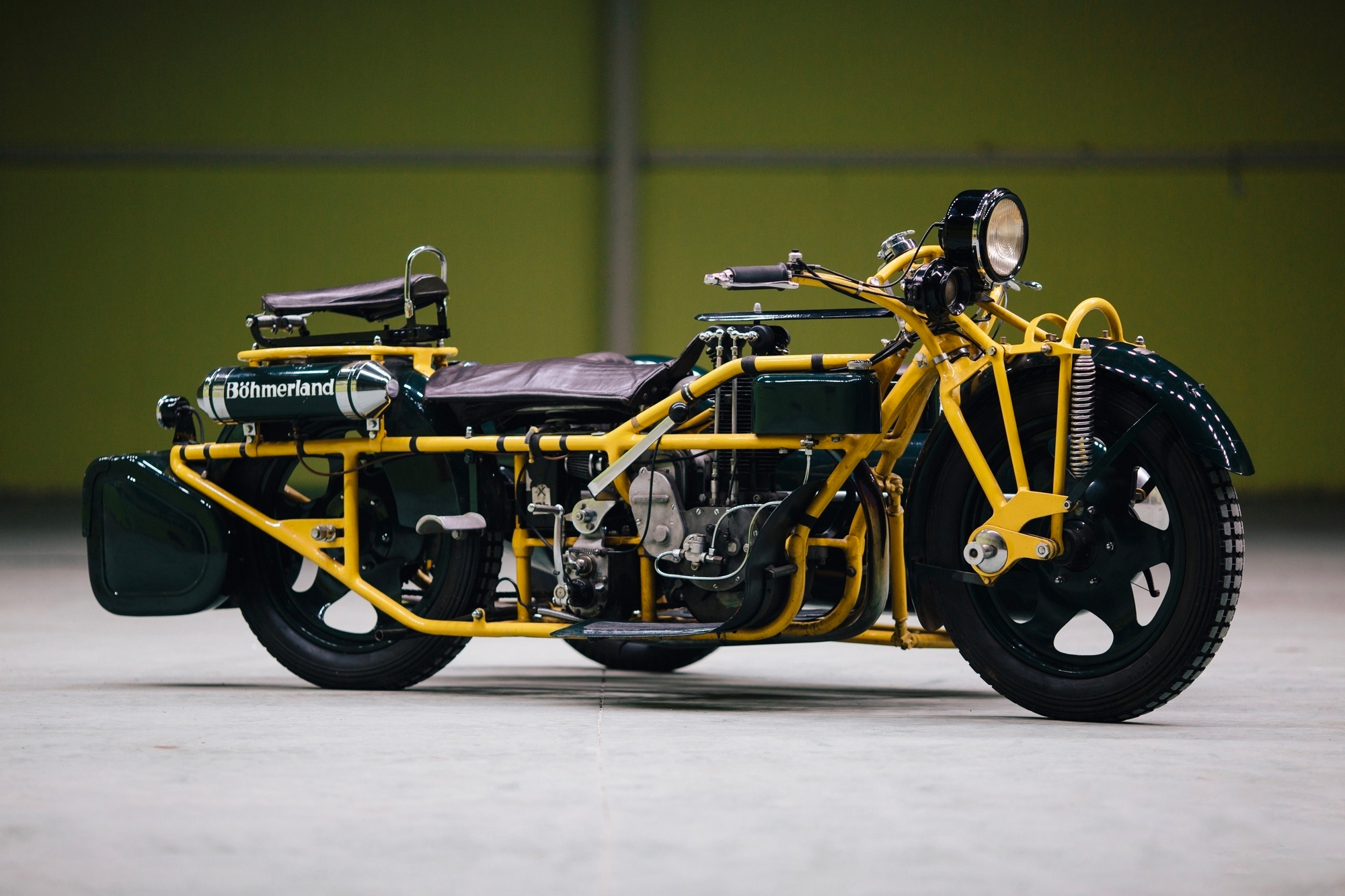
Unlike the Kettenkrad, the Böhmerland was a pre-war design from Czechoslovakia that managed to see some battle action in its twilight years—thanks in large part to its carrying capabilities and large capacity power plant. With space for four in sidecar guise, the bike measured over three meters in length and could manage 120 kmph (75 mph) for riders who dared take the behemoth to such speeds.
Totally lacking in any cornering abilities, the bike was very much a ‘point and shoot’ proposition in the sense that even the most gentle of corners were enough to force the bike to reduce its speed greatly to ensure it didn’t topple over.
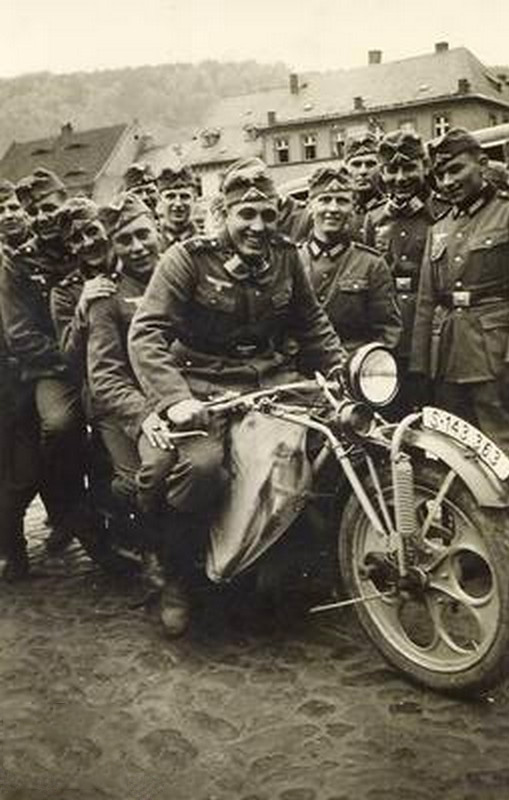
This bike was more of an oddity that became useful to occupying German forces than an all-out war motorcycle. The Böhmerland (or ‘Bohemia’ in English) was actually produced in a military version, but to say that it had any great impact on the outcome of the war would be rather overstating the bike’s abilities.
Other interesting facts about the bike include that its fuel line was over 2 meters long, the total-loss oil system was seemingly designed to cover the riders with a thick coating of black gold, and the front fork design was about as complex as your average V2 rocket. But for sheer steampunk weirdness, nothing else comes close.
2. Moto Guzzi ‘Mulo Meccanico’ (1960)
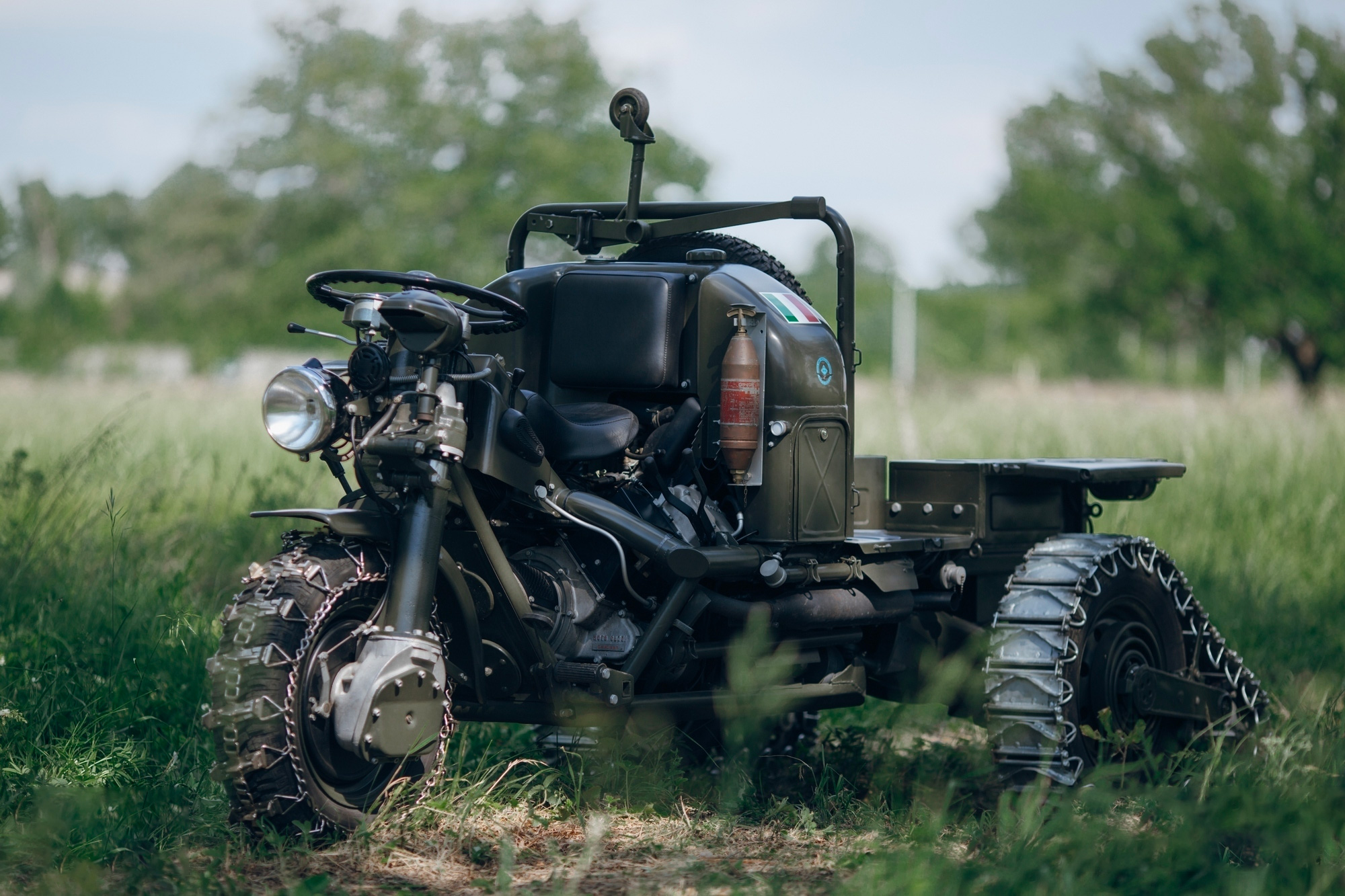
Not to be outdone by Germans, the Italians also had their fair share of battle wackiness, as evidenced by the rather wonderful Moto Guzzi you see here. Designed to climb mountains and to replace mules, which were traditionally used by Italian forces to get gear overland in the country’s mountainous north, every second photo of the tricycle in action appears to show it climbing up a tree—for purposes that we can only speculate.
Maybe there were olive-picking intentions for the bike when it wasn’t being used in combat? Whatever the case, it also cleverly demonstrated the bike’s nifty 3WD system.
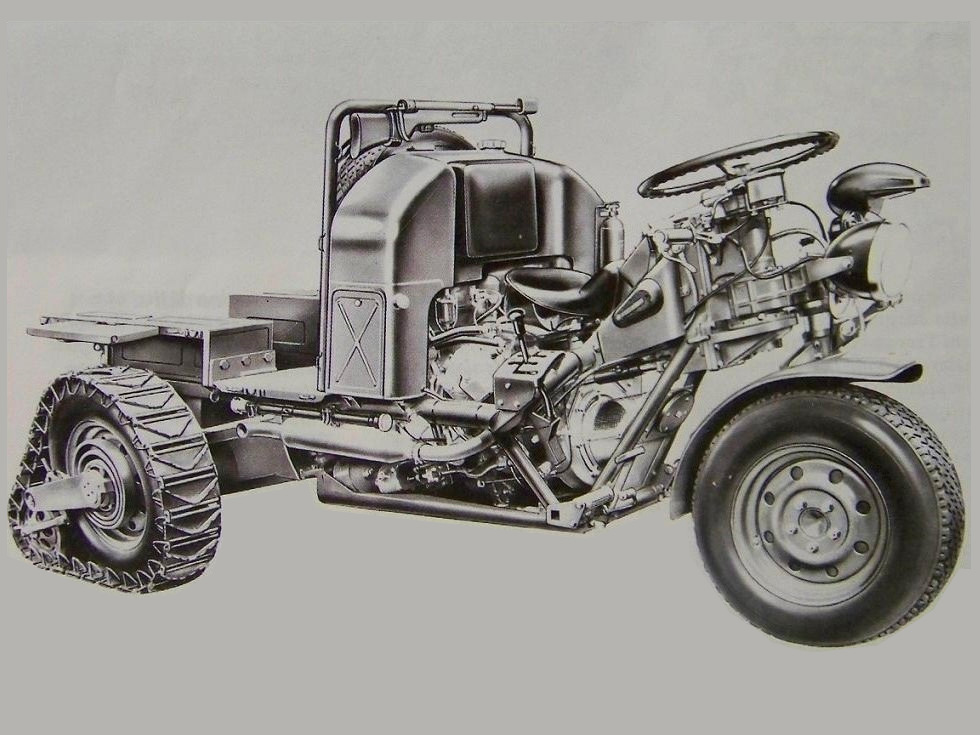
So with power supplied to all three wheels, the bike was more than capable when it came to climbing over obstacles and the like. And with 20 years of development and engineering under its belt since WWII, Moto Guzzi built the tricycle with an impressive six-speed transmission, reverse gear, switchable diff and even a torque split system that supplied 80% of the oomph to the rear wheel and the rest to the front.
Sadly, the bike didn’t quite cut the mustard in the field, and several riders reportedly died after the hefty machine rolled over on them in rough terrain. It would seem that even with 20 years of progress, the Italian engineers still couldn’t better Germany’s flawed Kettenkrad design—but they sure went head-to-head with them when it came to the looks.
1. Moto-Chenille Mercier (1939)
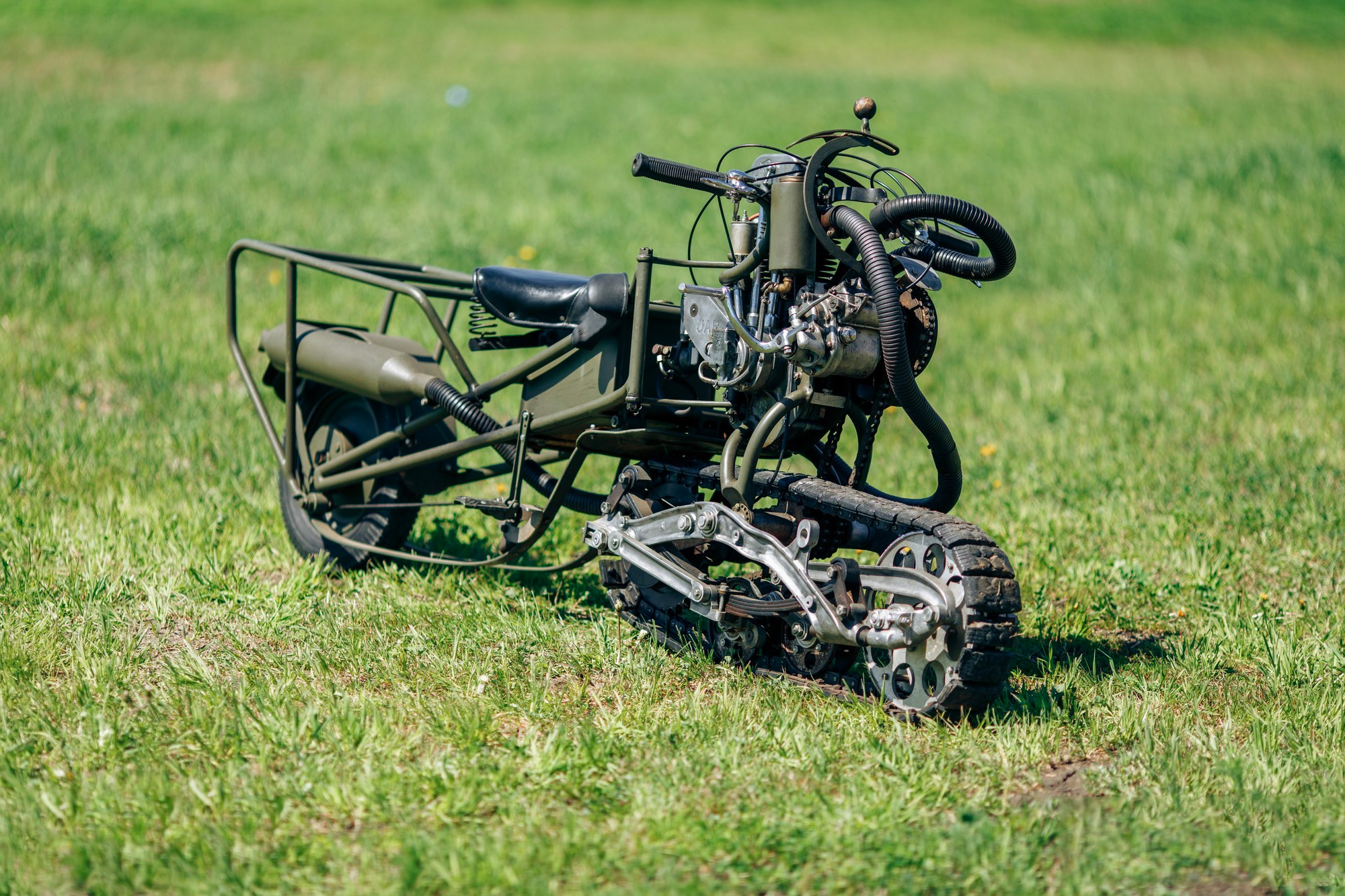
Developed from a long-term military interest in ‘semi-track’ vehicles globally since the 1920s, the French René-Gillet company (often called the Harley-Davidson of France) were asked by the French military in the early ‘30s to test the viability of tank-tracked motorcycles in off-road conditions with any eye to awarding a military contract to the company. The result was the father of the bike you see here.
More of a traditional motorcycle with a tank-like sidecar grafted onto the original chassis, it was still enough to keep the French army interested and wanting to see more. Too much red wine, maybe?
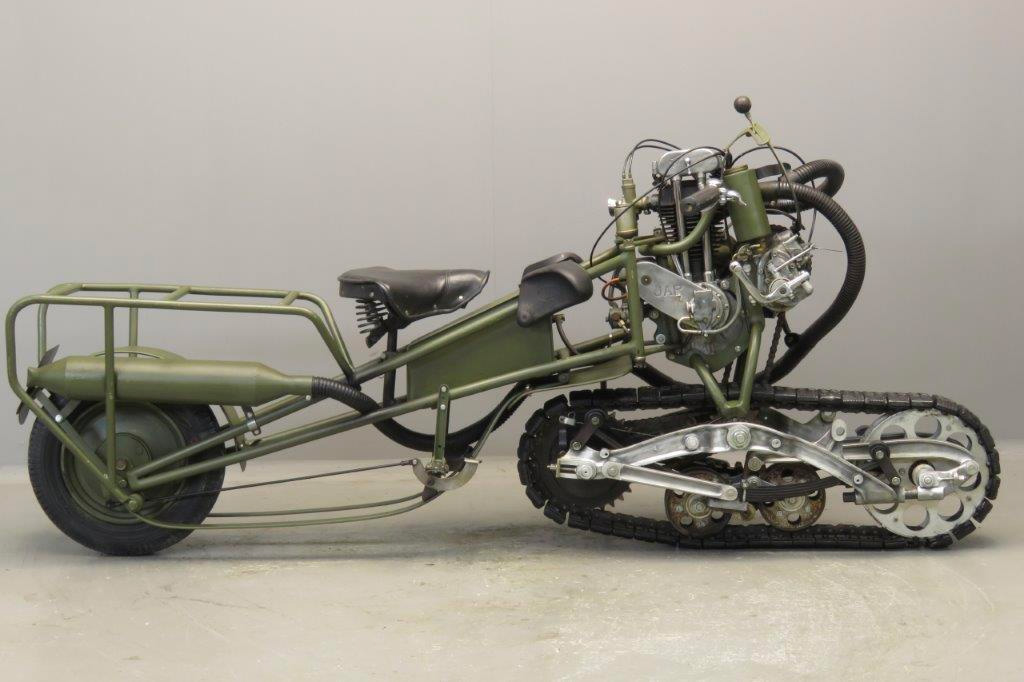
Thus, Moto-Chenille created this little wonder. Despite the beautiful JAP engine and undoubtedly cool design, the actual cooling of the bike was handled by a unique system involving a fan and a pipe that was used to direct air where needed.
Reports hint at a healthy top speed and ease of use that was stifled by the highly temperamental caterpillar track system. It’s also noted that in a test against a standard French motorcycle of the time, the Moto-Chenille was slower, more thirsty and (rather surprisingly) less capable when it came time to traverse a muddy trench. But what the bike did really well was climb like a billy goat. Until its front track failed, that is. C’est la vie.

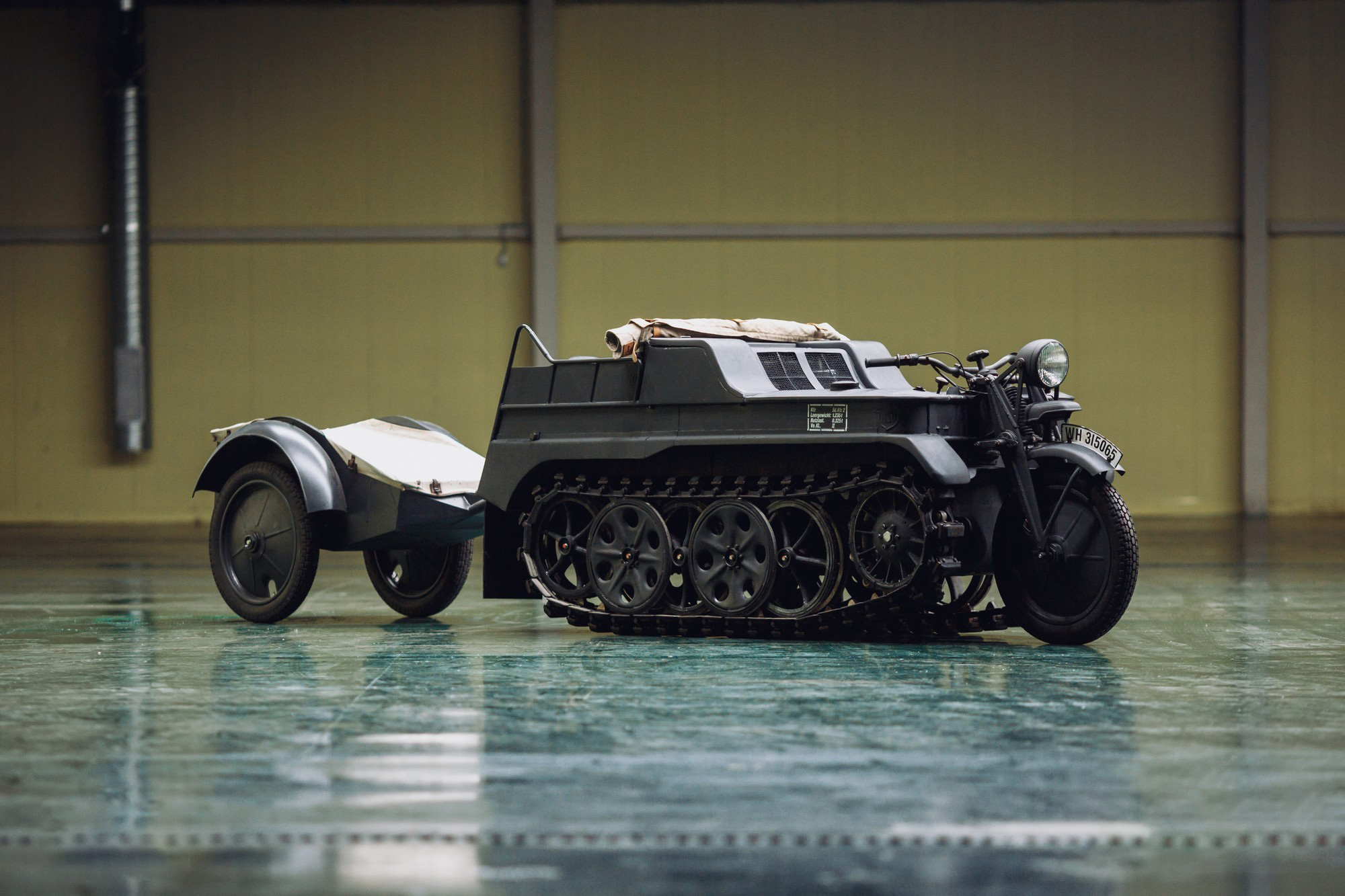
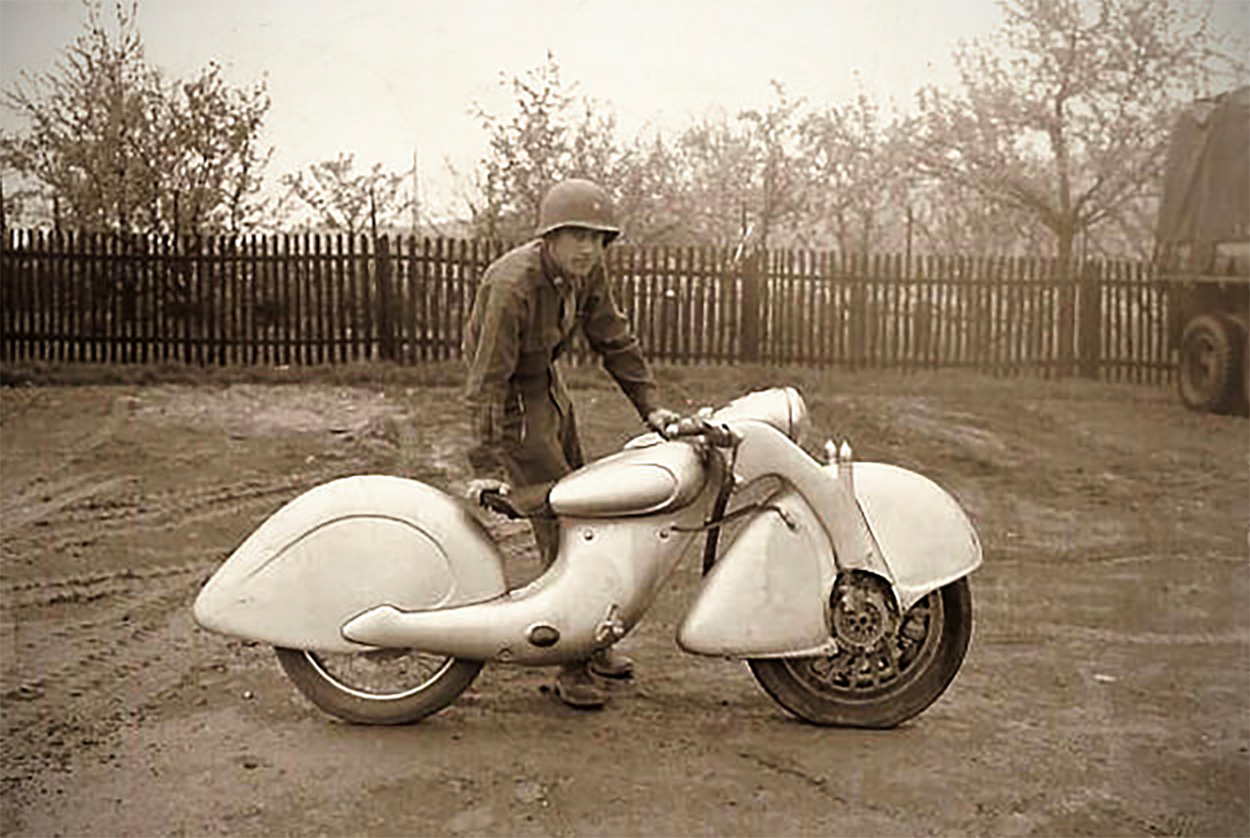
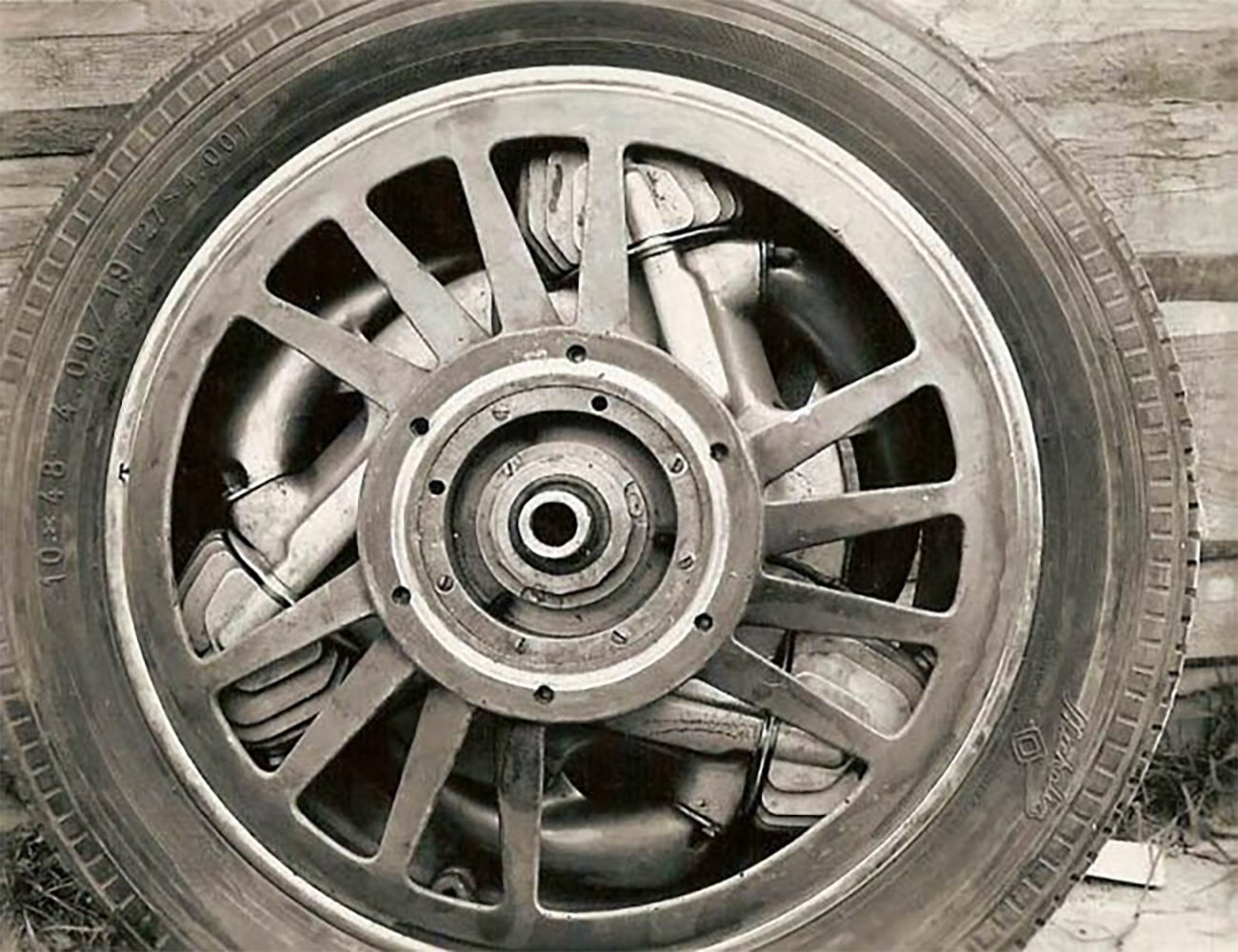
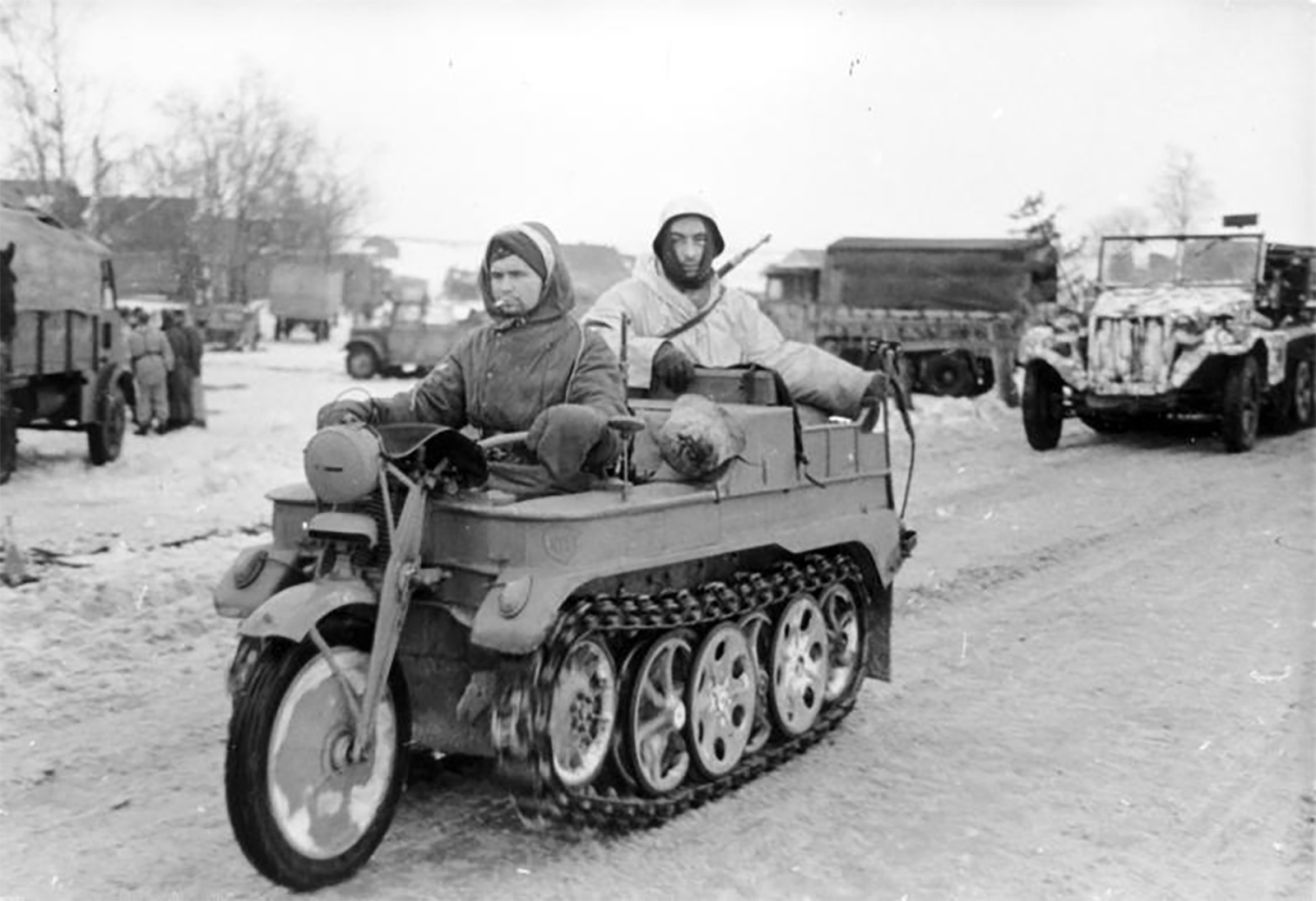

enjoyed reading these
Most interesting piece of motorcycling history..
told with a tinge of humor.. excellent. Thank you